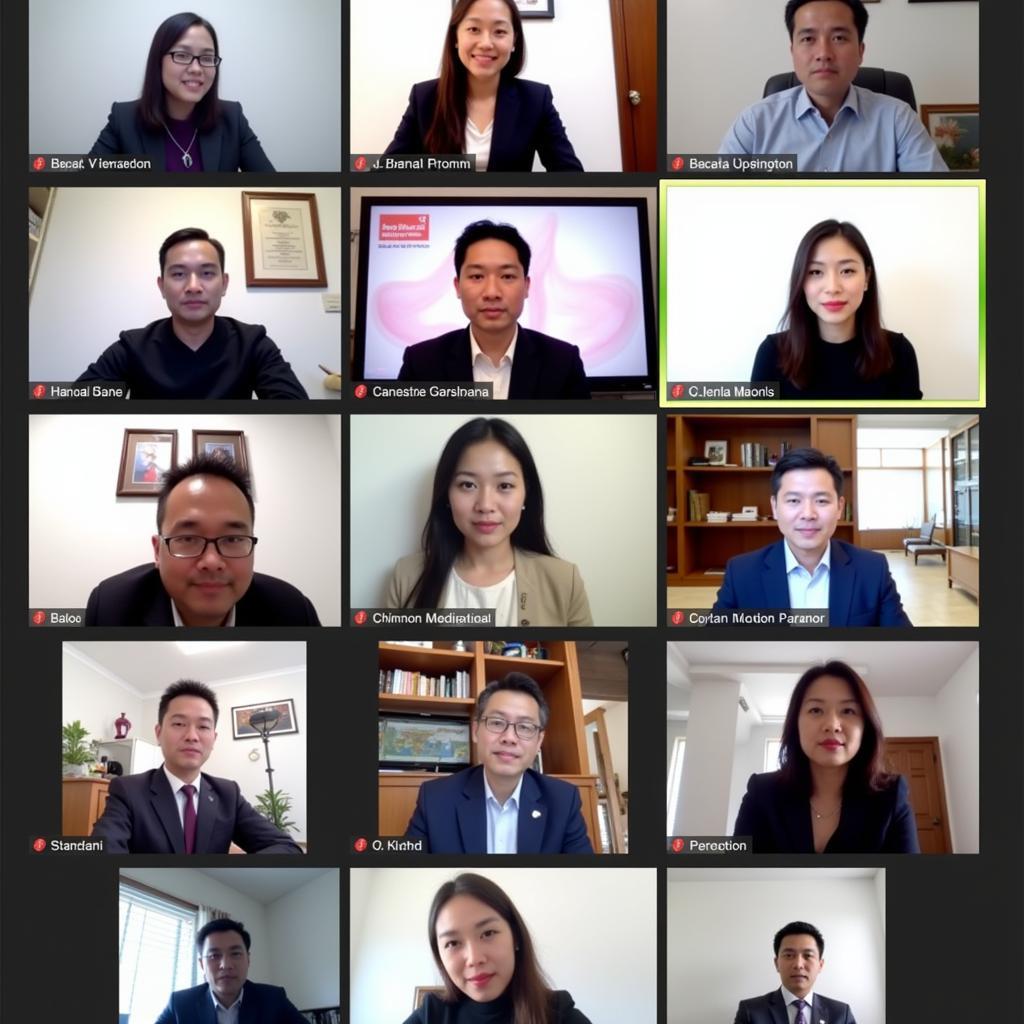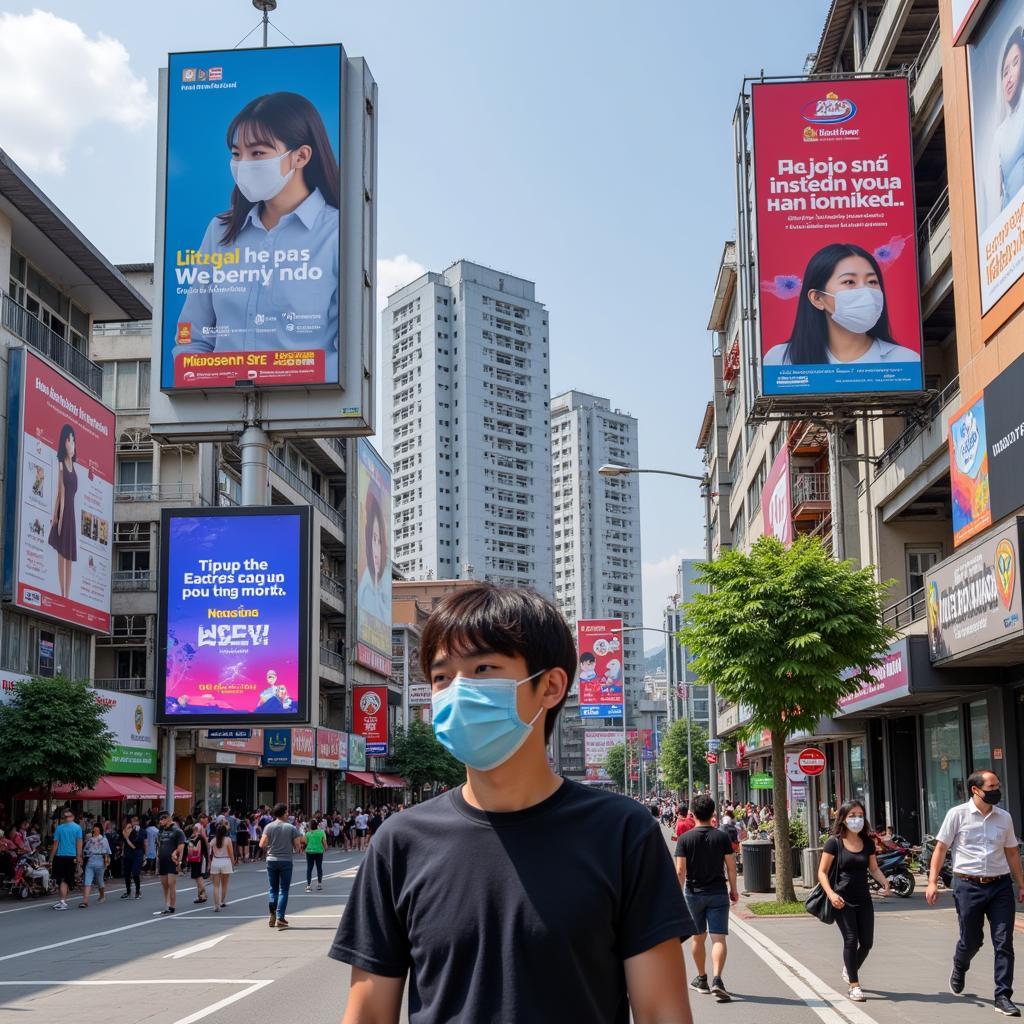The COVID-19 pandemic presented unprecedented challenges to the ASEAN region, demanding swift and coordinated action. Understanding and adhering to ASEAN COVID-19 guidelines was crucial for managing the health crisis and mitigating its socioeconomic impacts. This article delves into the key aspects of these guidelines, offering insights into how the region navigated the pandemic together.
ASEAN’s Coordinated Response to COVID-19: A Look at Key Guidelines
The ASEAN region, known for its diverse cultures and economies, faced a common enemy in COVID-19. Early on, the Association of Southeast Asian Nations recognized the need for a unified front against the virus. This led to the development and implementation of comprehensive COVID-19 guidelines. These guidelines aimed not only to control the spread of the virus but also to minimize disruptions to essential services and cross-border movements. The collaborative spirit of ASEAN played a crucial role in shaping these measures.
 ASEAN COVID-19 Response Team Meeting
ASEAN COVID-19 Response Team Meeting
Public Health Measures: Protecting Citizens Across Borders
ASEAN’s COVID-19 guidelines emphasized public health measures as the first line of defense. These included promoting mask-wearing, social distancing, and enhanced hygiene practices. Member states also focused on strengthening healthcare systems, increasing testing capacity, and ensuring the equitable distribution of vaccines. These measures were essential to control the spread of the virus and protect the health of ASEAN citizens.
 ASEAN Public Health Campaign Promoting Mask Wearing
ASEAN Public Health Campaign Promoting Mask Wearing
Economic Resilience: Navigating the Socioeconomic Impact
Beyond public health, the guidelines also addressed the socioeconomic ramifications of the pandemic. ASEAN recognized the need to support businesses, protect jobs, and ensure the continued flow of goods and services. Measures included financial assistance programs, trade facilitation initiatives, and support for the tourism sector. These efforts aimed to build resilience and mitigate the long-term economic impact of the crisis. Did you ever imagine the world would change so drastically? The pandemic truly tested the economic strength of nations.
ASEAN COVID-19 Guidelines: A Path to Recovery
The ASEAN COVID-19 guidelines served as a roadmap for navigating the complexities of the pandemic. These guidelines reflected the region’s commitment to collective action, demonstrating the power of unity in times of crisis. While challenges remain, ASEAN’s collaborative approach has been instrumental in mitigating the impact of COVID-19 and paving the way for a healthier and more resilient future. These guidelines will undoubtedly continue to inform future pandemic preparedness strategies in the region. Remember the importance of staying informed about ASE testing coronavirus.
“The ASEAN response to COVID-19 highlighted the importance of regional cooperation,” says Dr. Anya Sharma, a leading epidemiologist based in Singapore. “Sharing information and coordinating strategies proved essential in containing the virus.” Another expert, economist Mr. Budi Santoso from Indonesia, adds, “The pandemic underscored the interconnectedness of our economies. ASEAN’s collaborative approach to economic recovery was vital.”
Conclusion: A Collective Effort for a Healthier ASEAN
The ASEAN COVID-19 guidelines were crucial in the region’s fight against the pandemic. They provided a framework for coordinated action, facilitating a cohesive response to the health crisis and its socioeconomic consequences. By working together and adhering to these guidelines, ASEAN member states effectively mitigated the impact of COVID-19 and laid the foundation for a stronger, more resilient future. ASEAN 2021 saw the region facing unprecedented challenges, yet the spirit of unity prevailed. Let us continue to be vigilant and work together for a healthier ASEAN. ASE 2021 also focused on economic recovery. You can learn more about it at ASE Commerce. The 2020 ASEAN Para Games were also affected by the pandemic.
FAQ
- What were the key components of the ASEAN COVID-19 guidelines?
- How did ASEAN address the economic impact of the pandemic?
- What role did public health measures play in ASEAN’s COVID-19 response?
- How did ASEAN promote cooperation among member states during the pandemic?
- What are the long-term implications of the ASEAN COVID-19 guidelines?
- What were some of the challenges faced by ASEAN in implementing the COVID-19 guidelines?
- How will these guidelines inform future pandemic preparedness strategies in ASEAN?
Scenarios
- Scenario 1: A traveler arriving in an ASEAN country wants to know the latest entry requirements and quarantine procedures.
- Scenario 2: A business owner seeks information on financial assistance programs available to support their business during the pandemic.
- Scenario 3: A healthcare worker wants to access the latest guidelines on COVID-19 testing and treatment protocols.
Further Resources
- Learn more about ASEAN’s health initiatives.
- Explore the economic recovery plans of individual ASEAN member states.
- Find out more about travel advisories and restrictions within the region.
When you need assistance, contact us at Phone Number: 0369020373, Email: aseanmediadirectory@gmail.com Or visit us at: Thon Ngoc Lien, Hiep Hoa, Bac Giang, Vietnam. We have a 24/7 customer service team.
